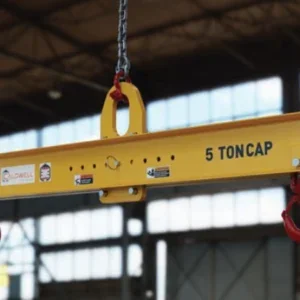Whether an injury occurs due to a piece of machinery or a trip hazard on the floor, it is essential to understand the procedures and what your employer’s responsibilities are. Preventative measures should be taken to develop and maintain a low-risk work environment that protects the wellbeing of all employees'. The personal injury experts at Ramsdens explain the steps that should be taken to ensure the safety of all employees.
Identify potential hazards in the workplace and take steps to prevent them
Staying aware of potential hazards in the workplace is important for effective safety management. Employers must conduct risk assessments to identify these hazards before any work can begin in a new location, or before a new project is started. Risk assessments must be conducted at least once a year, or whenever any significant changes are made to a workplace. It is essential that risk assessments are done with the help of a HSE-certified health and safety professional to ensure risk assessments comply with the Health and Safety at Work Act 1974. If an employer fails to properly implement a risk assessment, employees may be able to make a personal injury claim if any accidents occur.
Identifying potential risks relies on extensive knowledge of the work environment, routines and processes, as well as frequent risk assessments. Once unsafe behaviours, conditions and activities are identified, steps should be taken to ensure that any risks are eliminated or minimised. This could include introducing health and safety regulations, reviewing and updating operational processes, or providing additional training or protective gear to employees. It is essential that everyone within the workplace upholds an understanding of workplace safety culture and actively works together to prevent any unnecessary accidents or injuries.
Establish a clear set of safety policies and procedures to follow
Creating and maintaining a clear set of safety policies, procedures and guidelines is essential to ensuring the health and safety of all personnel in the workplace. Whilst HSE has its own rules surrounding how certain hazards must be handled, employers can go a step further by implementing their own company regulations. For example, employers can give their workers longer or more frequent breaks than required to ensure they avoid physical strain – including eyestrain – or mental exhaustion. This may improve productivity and reduce the risk of burnout.
Clear expectations need to be communicated with regard to employee behaviour and the usage and handling of equipment.Employers should ensure all members of staff are aware of their responsibilities to report accidents and incidents and the procedures in doing so. Regular assessment and inspections should also take place so that any desired or necessary improvements to the company's policies or the workplace can be made in a timely manner. Above all else, it is crucial for everyone at each level of the organisation to understand how to respond appropriately to hazardous situations.
Invest in regular training for employees on how to safely conduct their tasks
Regular training on proper safety practices will help to keep employees safe and allow them to confidently complete their tasks whilst minimising risks. Not only will this lead to better efficiency and productivity, but it will also ensure an environment where employees can feel comfortable and secure. Furthermore, regular training can help reduce the potential for work-related accidents, illnesses or other issues. Investing time and funding into safety training is an effective way of helping employees do their jobs more safely and efficiently, which in turn will reduce risk.
Make sure that all employees are aware of safety measures
To guarantee that every employee is adequately informed of safety-related measures, it is important to adhere to a system of clear communication that outlines all rules and obligations that both the employees and employer must follow. These needs may evolve and change over time, so frequent reminders to staff about protocols and expectations should be implemented, thereby providing an easily accessible reference point when necessary.
Communication about safety measures should be made through training sessions, direct communication and announcements on workplace forums. If an employer plans to inform employees of any new rules or hazards by email or direct message, they must ensure that the communication is done clearly and will not be missed – if the email or message is lost within other communications and the employee fails to see it, the employer may be held responsible for failing to take adequate measures to inform the employee, rather than the other way around. It is therefore essential that employers take every precaution to ensure their communications are received.
Ensure that all equipment is properly maintained, inspected regularly, and updated as needed
The importance of properly maintaining, inspecting and updating equipment is paramount to the success of any organisation and the safety of its employees. Regular inspection and maintenance are required to ensure that all equipment is working correctly, meeting safety standards, and effectively carrying out its intended purpose. Keeping equipment up-to-date ensures that it not only continues to perform its function but also does so with maximum efficiency. For example, this may mean replacing parts on a tool or providing better computer hardware, such as improved screens, to reduce chance of injury and improve the performance of the tool or computer.
Taking care of these important tasks may also help to reduce repair costs, as well as minimise potential downtime caused by malfunctioning equipment. Employers should plan to conduct maintenance at a time where it will not affect the company's productivity or the employees' safety.
Provide appropriate protective clothing for hazardous tasks
Providing protective clothing for hazardous tasks should be a key safety priority. HSE requires that personal protective equipment (PPE) is provided to employees in environments wherever there is a risk to health and safety, for example:
- In construction environments, hard hats, hi-visibility clothing, protective footwear and breathing apparatus may be required
- In laboratory environments, overalls and eyewear may be required
Before any work can be started, employers must ensure that their employees are using the correct equipment and that it is of a high standard. Employers must assess the hazards of the workplace to determine what type of PPE would be most beneficial. Providing this equipment is an important step towards creating a safe work environment where hazards can be addressed in ways that drastically reduce their dangers.
With all the potential risks and hazards within any workplace environment, it is essential to have a set of safety policies and procedures in place. These safety measures should be communicated with employees, updated regularly, and properly enforced by management. Additionally, protective clothing, regular inspections of equipment and up-to-date training will help to reduce workplace accidents.
By implementing these actionable steps for keeping the workplace safe and secure, employers can ensure their staff are adequately protected against risk and harm. This approach ultimately creates a safer, more comfortable working environment for everyone.
If you are an employee who has suffered due to your employer’s negligence in any of the above areas, or you are concerned about a risk that your employer is not taking seriously, speak to a personal injury solicitor today for legal advice and help.






